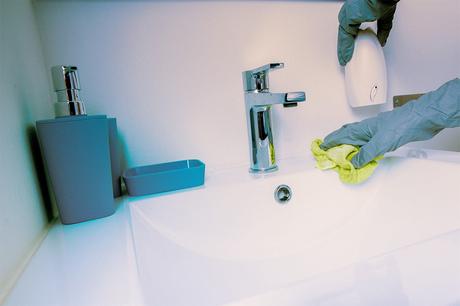
Mold in your bathroom might seem harmless, but it can actually be a serious problem. Not only is some mold extremely toxic, but it also indicates excess moisture that needs to be addressed. Whatever the case may be in your bathroom, it's important to address the situation immediately to prevent further growth or damage. Here are three main reasons you should do everything you can to prevent mold growth.
Mold can be harmful to your health
The main reason to avoid mold growth is because of the negative impact it can have on your health. According to the National Capital Poison Center (Poison Control), mold is associated with some serious health problems in people. These problems could be as minor as allergies and coughing or as serious as toxic mold disease that can compromise your immunity.
Mold spores are everywhere at all times, but it takes moisture for them to grow and spread. This is why bathrooms are ideal breeding grounds for the substance. If you notice the development of mold, it might be necessary to contact a professional such as those at Done Rite Plumbing to make sure there are not leaks in your plumbing causing the issue.
Mold can cause structural damage
Mold can signal some serious water leaks that can be compromising the structure of your home. But aside from this fact, it can also cause some of the damage itself. Mold can grow on any organic material in moisture, including wood, carpet, paper, and insulation. And once it starts growing, it eats away at the material it is living on. If it is left to its devices, it will gradually destroy and weaken your home's structure.
Mold is ugly
A not-as-serious effect of mold is the way it looks. There are different colors of mold, including black, green, and yellow. But each makes the surface it's growing on look dirty or damaged. If it is allowed to continue growing, it will leave behind stains that are often difficult to remove. Aside from the way it looks, mold also gives off a musty and unclean odor, making the room feel dirty and uninviting.
How to detect mold
Most of the time, you'll know you have mold because you will see it. It often finds itself in bathtub corners or around toilets. But other places you might not see too often are under the sink and behind cabinets. Check these areas regularly when cleaning. Look for discoloration, peeling paper or sheetrock, or moldy smells.
How to treat mold
If you see indications of mold, it's best to treat it before it has a chance to spread. If the area of mold is large, be sure to wear gloves and a dust mask to clean it up. Scrub the mold from the surfaces with a scrub brush and a cleaning solution. There are several substances that will kill and remove mold. Bleach, ammonia, baking soda, borax, vinegar, hydrogen peroxide, and tea tree oil are just a few. Any of these substances should be mixed with water and applied liberally to moldy surfaces. Once the mold is completely removed, dry the surface thoroughly with towels, fresh air, or fans.
How to prevent mold
The best treatment for mold is always prevention. Whenever possible, it's important to take steps in bathrooms to prevent its growth. For one thing, keep your bathroom surfaces as dry as possible. After showering or bathing, it's good to mop up excess water around the tub and floor. Also, avoid carpeting in bathrooms. Opt instead for tile or other hard surfaces that are easier to dry. Lastly, use a mold-killing cleaning solution to clean your bathroom once a week. Use it under the sink, around the tub, and at the base of the toilet, but also pay special attention to any areas you've found mold in the past.
